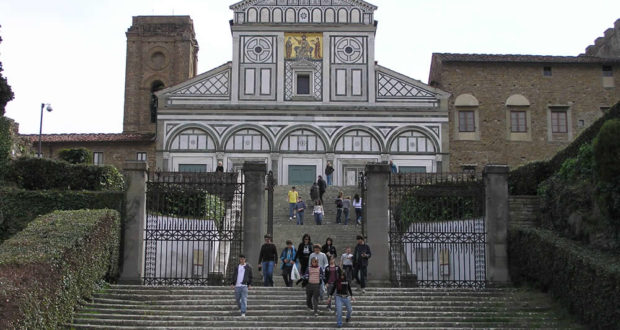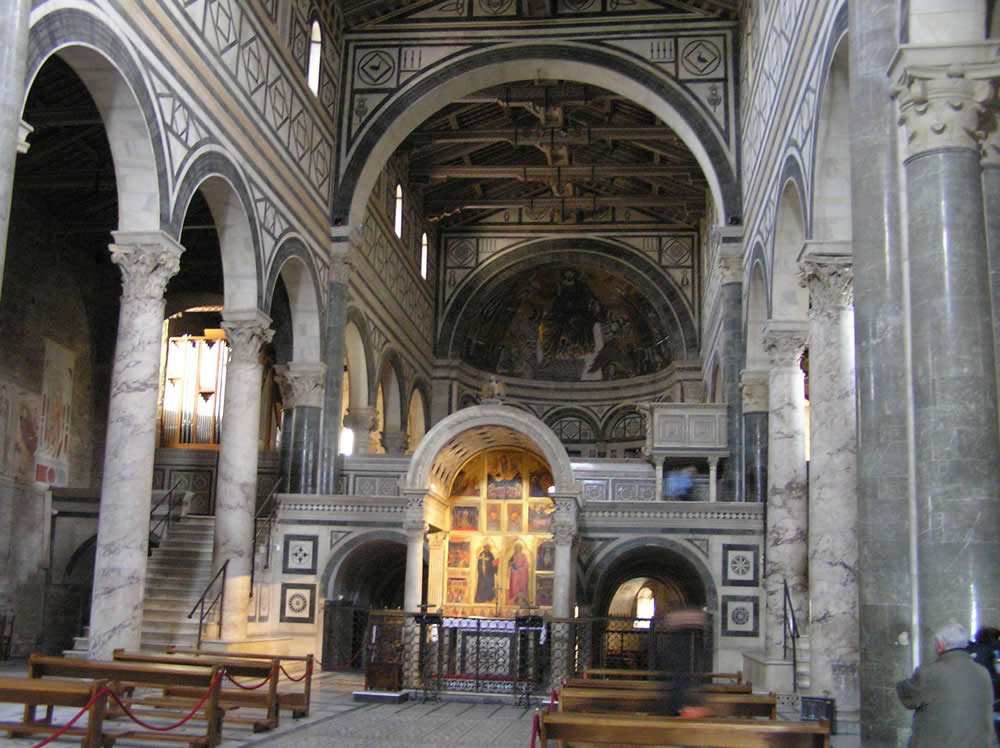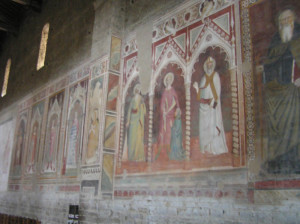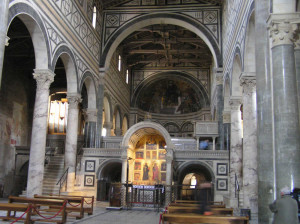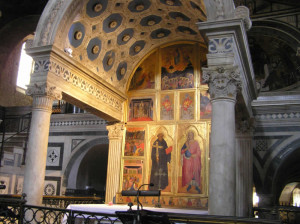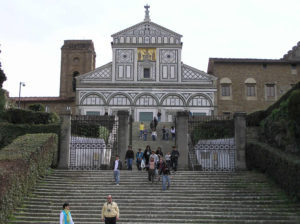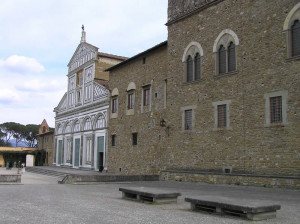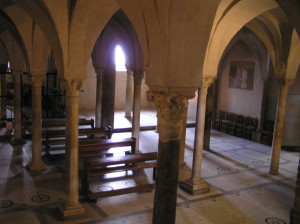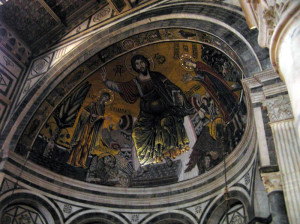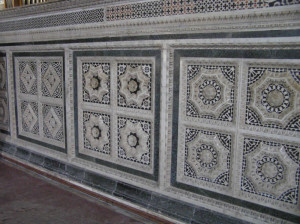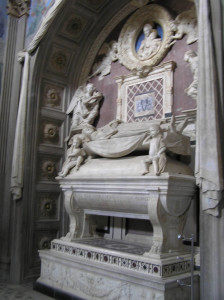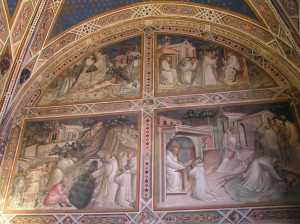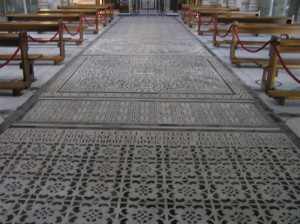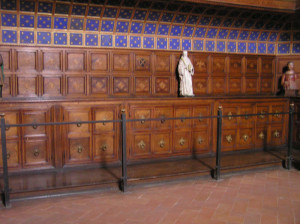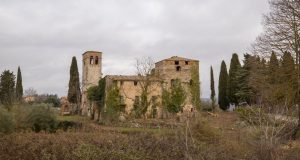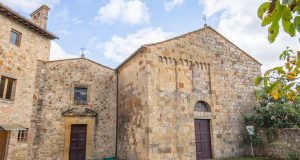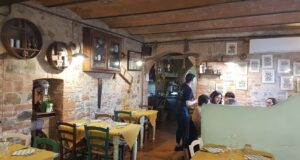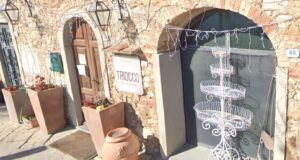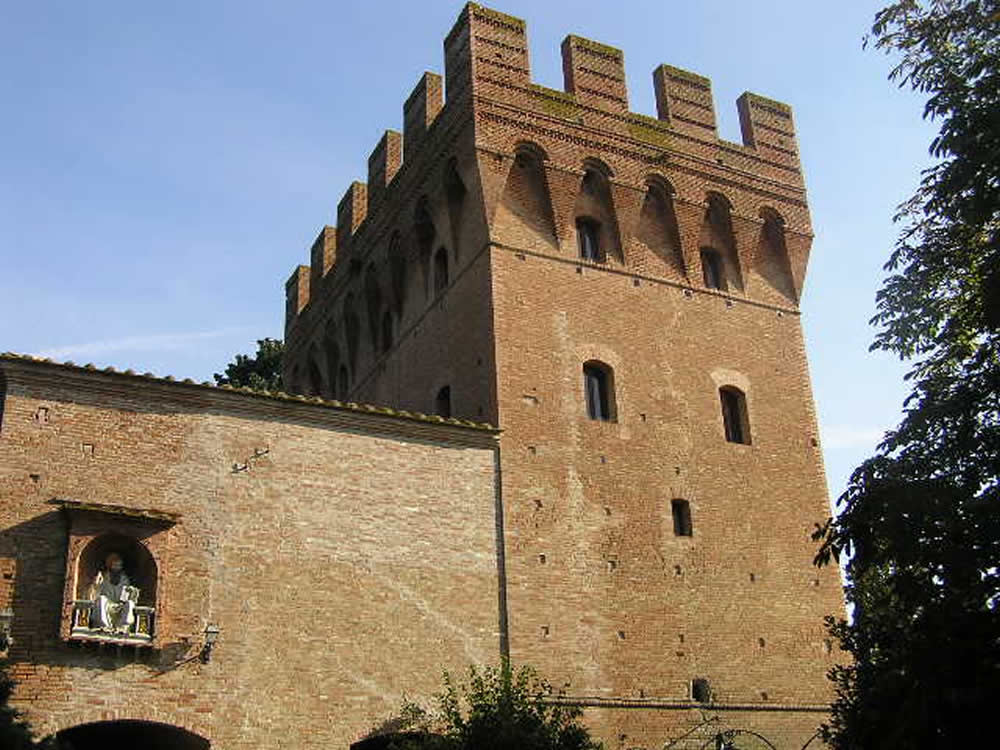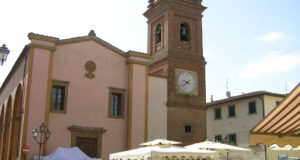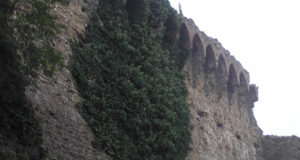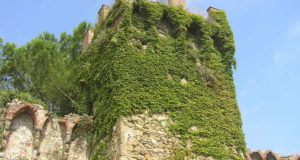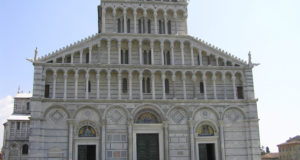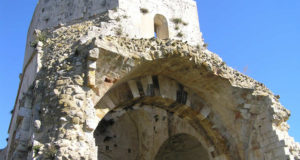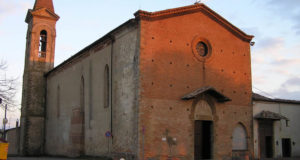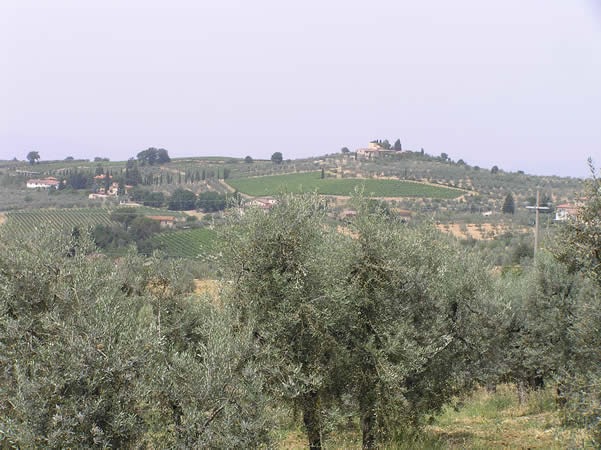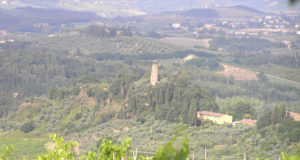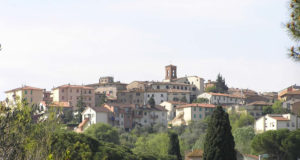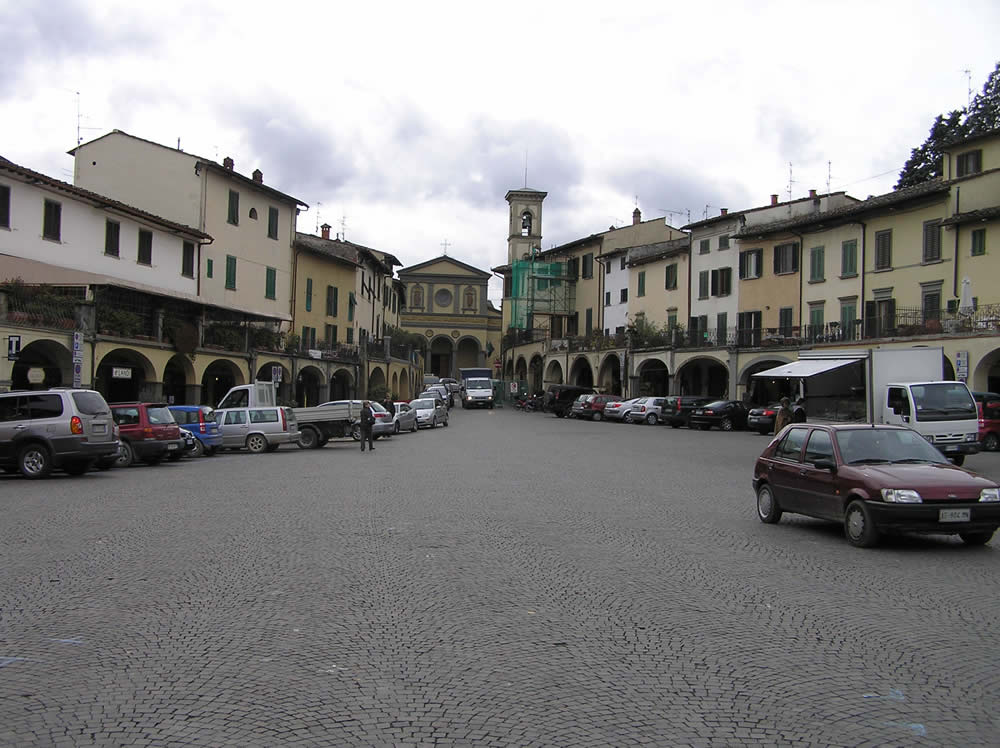A masterpiece of Tuscan Romanesque in Florence
The Basilica of San Miniato al Monte rises on a hill to south-east of the historical center of Florence, near Piazzale Michelangelo, and is considered one of the finest examples of Florentine Romanesque style. Built between the eleventh and the thirteenth century, contains works of great value as the chapel of the Cardinal of Portugal, and in the sacristy the splendid frescoes by Spinello Aretino, depicting the stories of St. Benedict.
The church is dedicated to the protomartyr San Miniato, whose history date back to the persecutions put in existence around the 250 dC. from Decio emperor. Miniato, a Christian of Armenian origin, was beheaded outside the walls of Florence (in the zone of Porta alla Croce, Piazza Beccaria) in order to have professed his own faith. The legend narrates that San Miniato collected his own head and crossed the Arno went to the hill where he was buried and where now it’s the church dedicated to him.
HISTORY OF THE CHURCH
The most ancient testimony of the existence of the church date back to the 783 aD. In the 11th century the bishop Ildebrando began the construction of the actual church, the works extended for beyond 200 years, in the annexed convent was installed a community of Benedictines monks. To the end of 13th century was built beside the church the palace know as Palace of the Bishops, it was the ancient summery residence of the Bishops of Florence, then it become Convent, Hospital and House of the Jesuits. Beginning from 1373 the monastery was granted to the olivetan monks.
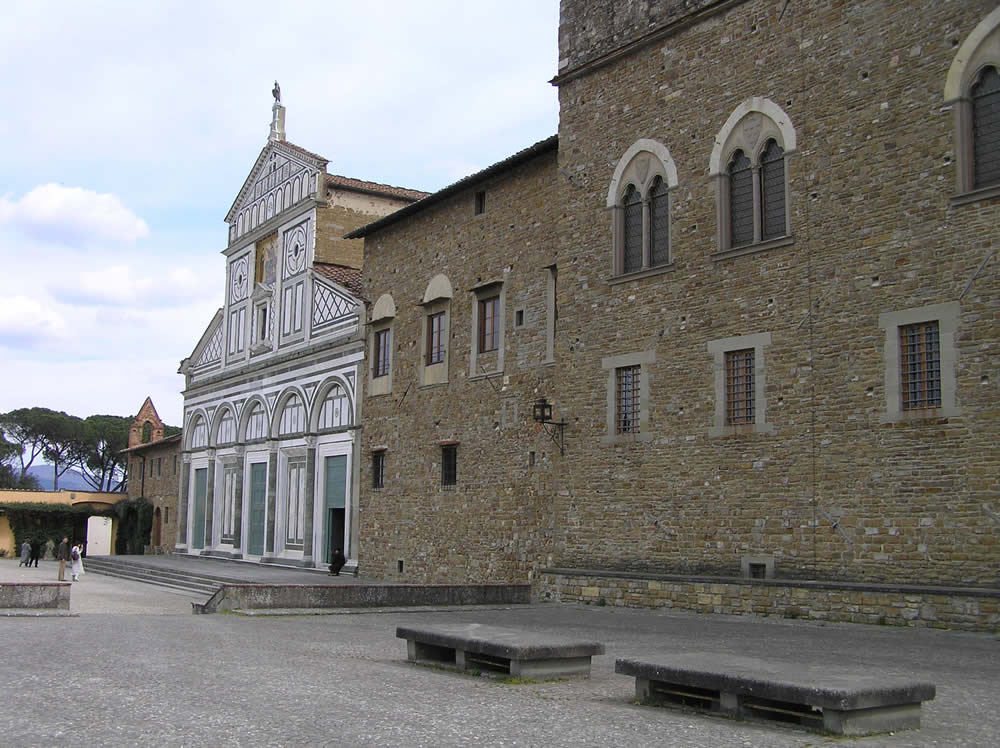
The facade of San Miniato al Monte and the Bishops’ Palace, Florence. Author and Copyright Marco Ramerini
During 16th century with asserting of the medicean rule, the zone, being in a dominant position over the city, was transformed in fortress, the monks abandoned the monastery, but the church thanks to the cult of the population for San Miniato remained intact.
The olivetan monks (from the Abbey of Monte Oliveto Maggiore in Siena province) returned only in the 19th century when also the monumental cemetary of the Porte Sante was built. This cemetary accommodates numerous chapels of the florentine bourgeoisie realized in liberty and art dèco styles.
A MASTERPIECE OF ROMANESQUE ART
This Basilica, is one of the masterpiece of the Romanesque in Tuscany, it joins the basilican system of classic derivation to the typically Romanesque elements. The facade in two colors of the church is covered with white and green marbles, in the characteristic Florentine Romanesque style of the 11th-13th century (similar to coeval Baptistery of San Giovanni), on the facade is a mosaic of 13th century representing Christ in throne between the Madonna and San Miniato, while on the top of the facade is placed a bronze eagle that represents the corporation of the merchants of the Art of the Wool (Art of Calimala) that from 13th century had the patronage on the church.
INTERIOR OF THE BASILICA OF SAN MINIATO AL MONTE
The interior of the basilica has three naves, the polychrome that marks the facade is also a characteristic that distinguishes the interior, dominated by the upper choir.
The side walls are filled with frescoes of the fourteenth and fifteenth century. While the floor of the nave is a marble inlaid with geometric and zoomorphic motifs, including the wheel of the Zodiac (1207) similar to that of contemporary Baptistery.
One of the masterpiece is the inlaid marble Aedicule (15th century) commissioned from Piero de’ Medici and designed by Michelozzo (1447). To notice the wonderful majolica vault work of Luca della Robbia. While on the altar there is an altar-piece of the end of 14th century of Agnolo Gaddi that represents San Giovanni Gualberto, San Miniato and some evangelic episodes.
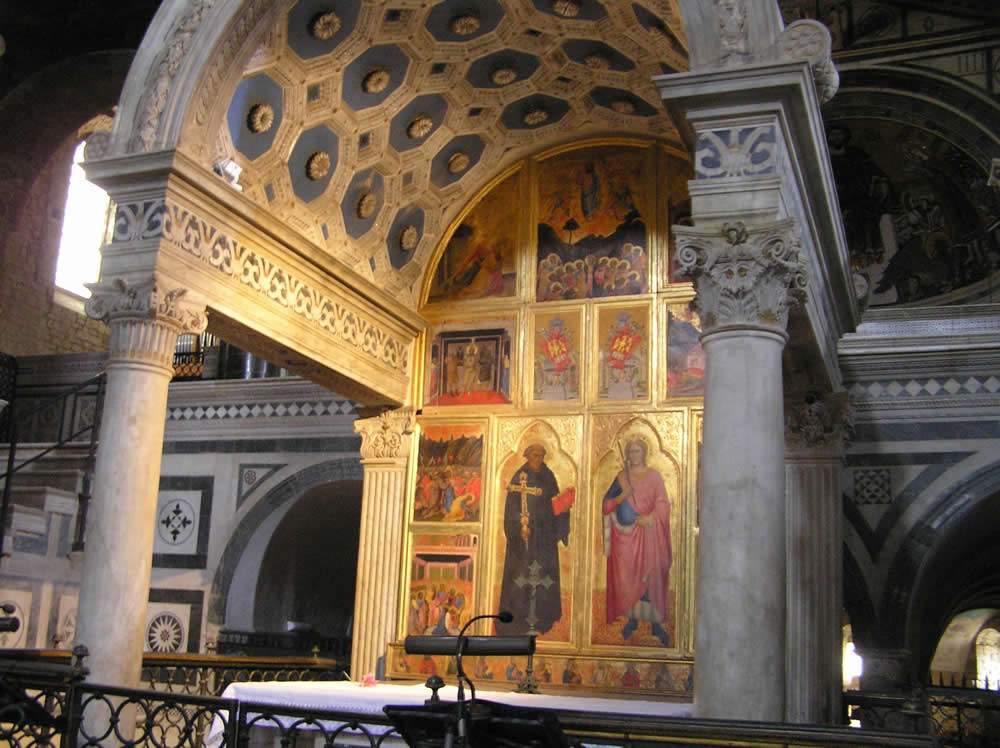
The shrine altar with inlaid marble (XV century). Basilica of San Miniato al Monte, Florence. Author and Copyright Marco Ramerini
Beautiful are the marble enclosure of the upper choir (13th century) with geometric and zoomorph themes (13th century), on the right of the enclosure is an ambo of 13th century.
The Apse is semicircular and introduces an architectonic decoration to white and green marbles. On the Apse dominates the late Byzantine style mosaic (1297) of the Christ Pantocrator with the Madonna, San Miniato and the symbols of the Evangelists.
The Crypt, than is found under the upper choir, is divided in seven small aisles from columns, some of them coming from ancient roman buildings, in the vaults are frescoes of Taddeo Gaddi (1341), the railing in wrought iron date back to the 1338. In the Romanesque altar of the Crypt are the body remains of San Miniato.
THE CHAPEL OF THE CARDINAL OF PORTUGAL
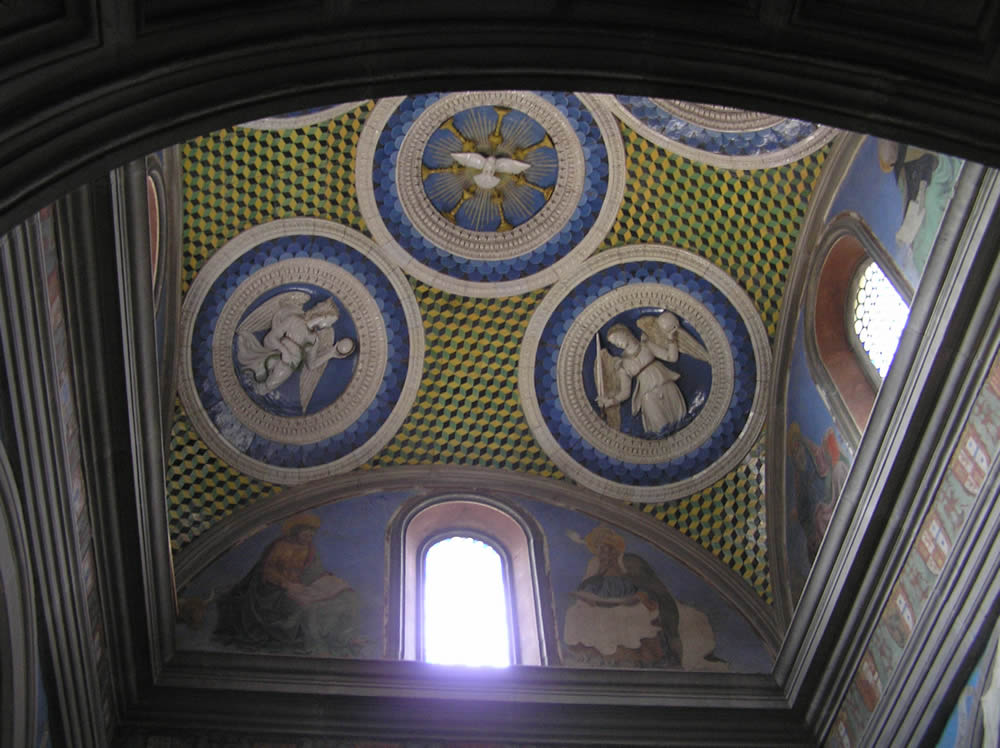
The vault in glazed earthenware (1461) by Luca della Robbia. Chapel of the Cardinal of Portugal. Basilica of San Miniato al Monte, Florence. Author and Copyright Marco Ramerini
On the left aisle of the church, is the Chapel of the Cardinal of Portugal. This chapel was made built from the King Alfonso of Portugal between 1461 and 1466. It constitutes a true masterpiece of the florentine renaissance.
It accomodate the body of the grandson of the King of Portugal, Giacomo of Lusitania, Bishop of Lisbona, died in Florence, in 1459.
The structure was designed by Antonio Manetti, Brunelleschi’s disciple. While the funeral monument of the Cardinal (1461-66) is the work of Antonio Rossellino. The chapel is embellished with paintings, colored stones and marbles. While the glazed terracotta vault (1461) representing the Cardinal Virtues is the work of Luca della Robbia.
This chapel is frescoed with frescoes by Alesso Baldovinetti. At last is present also an altar-piece of Antonio and Piero del Pollaiolo.
SACRISTY OF THE BASILICA OF SAN MINIATO AL MONTE
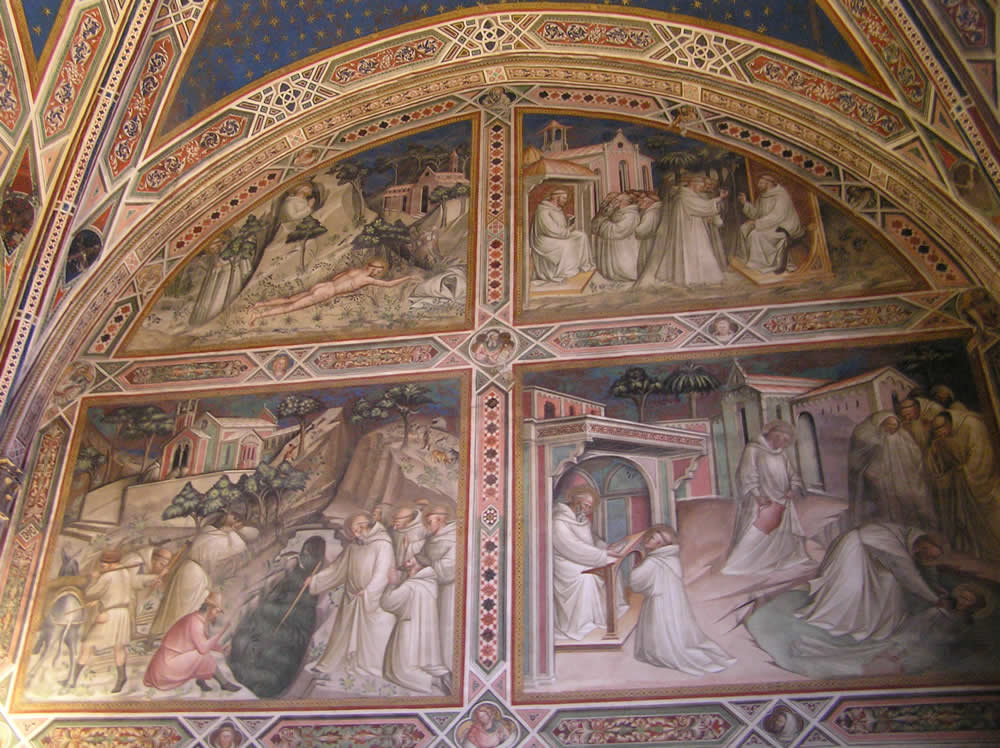
The frescoes of Spinello Aretino (1387 approximately) with scenes from the life of St. Benedict. Sacristy of the Basilica of San Miniato al Monte, Florence. Author and Copyright Marco Ramerini
At the end of the right nave is the sacristy, it has frescoes ordered by Benedetto degli Alberti to Spinello Aretino. The frescoes date back to the end of 14th century (around 1387). On the walls are scenes from the life of Saint Benedict, while the four evangelists are depicted on the ceiling. To enrich the room is also furniture of the fifteenth century.
- Frescoes (XIV-XV century) in the Basilica of San Miniato al Monte, Florence. Author and Copyright Marco Ramerini
- The interior of the Basilica of San Miniato al Monte, Florence. Author and Copyright Marco Ramerini
- The shrine altar with inlaid marble (XV century). Basilica of San Miniato al Monte, Florence. Author and Copyright Marco Ramerini
- The vault in glazed earthenware (1461) by Luca della Robbia. Chapel of the Cardinal of Portugal. Basilica of San Miniato al Monte, Florence. Author and Copyright Marco Ramerini
- The facade of San Miniato al Monte, Florence. Author and Copyright Marco Ramerini
- The facade of San Miniato al Monte and the Bishops’ Palace, Florence. Author and Copyright Marco Ramerini
- The Crypt. Basilica of San Miniato al Monte, Florence. Author and Copyright Marco Ramerini
- The mosaic in the late Byzantine style (1297) of the apse. Basilica di San Miniato al Monte, Florence. Author and Copyright Marco Ramerini
- Detail of the top choir marble enclosure (thirteenth century). Basilica of San Miniato al Monte, Florence. Author and Copyright Marco Ramerini
- Tomb of the Cardinal of Portugal (1461-66) by Antonio Rossellino. Chapel of the Cardinal of Portugal. Basilica of San Miniato al Monte, Florence. Author and Copyright Marco Ramerini
- The frescoes of Spinello Aretino (1387 approximately) with scenes from the life of St. Benedict. Sacristy of the Basilica of San Miniato al Monte, Florence. Author and Copyright Marco Ramerini
- The inlaid marble floor with geometric and zoomorphic figures. Basilica of San Miniato al Monte, Florence. Author and Copyright Marco Ramerini
- Furniture of the fifteenth century in the sacristy of the Basilica of San Miniato al Monte, Florence. Author and Copyright Marco Ramerini
 Borghi di Toscana Guida ai borghi e ai paesaggi della Toscana
Borghi di Toscana Guida ai borghi e ai paesaggi della Toscana
